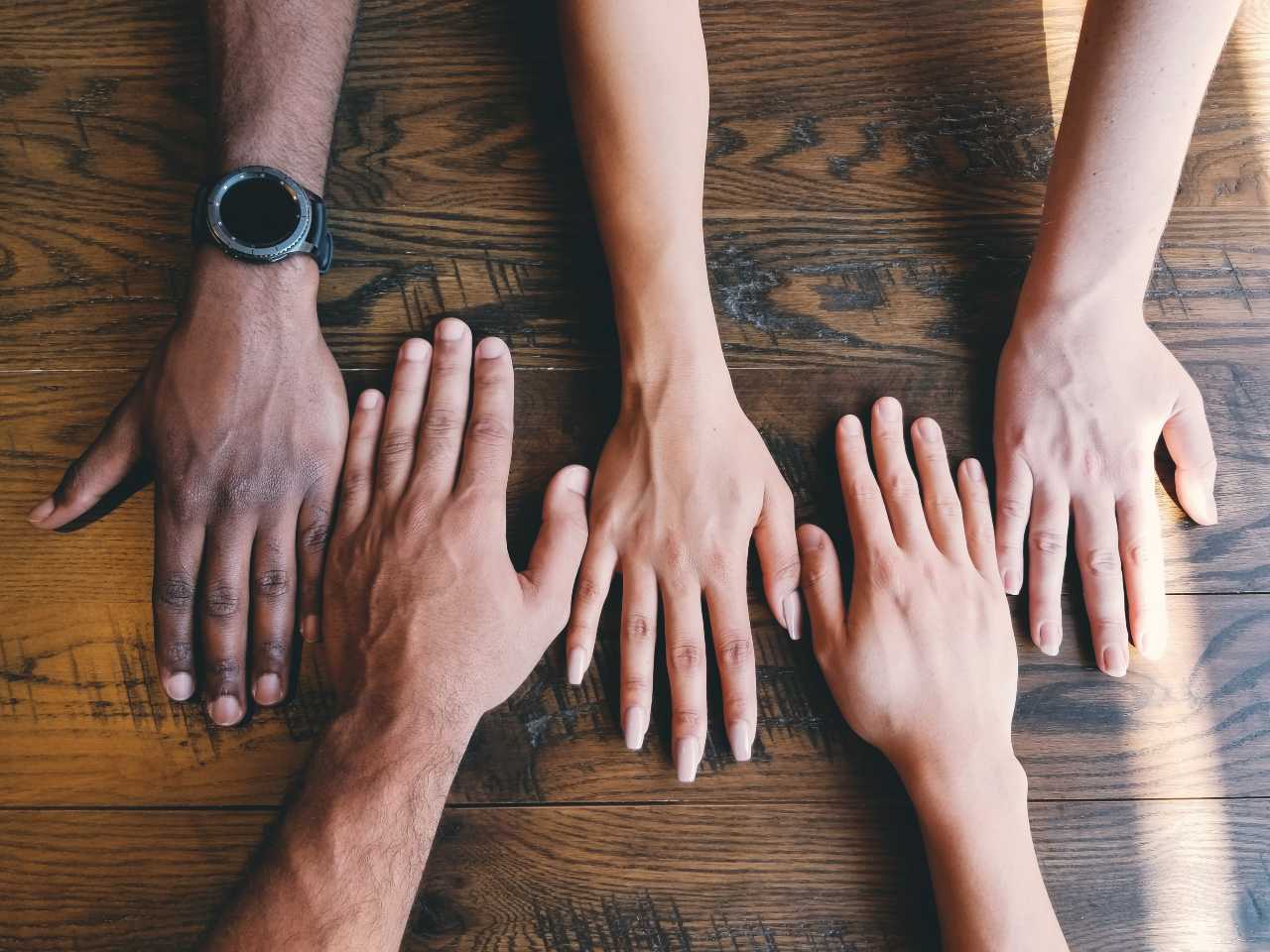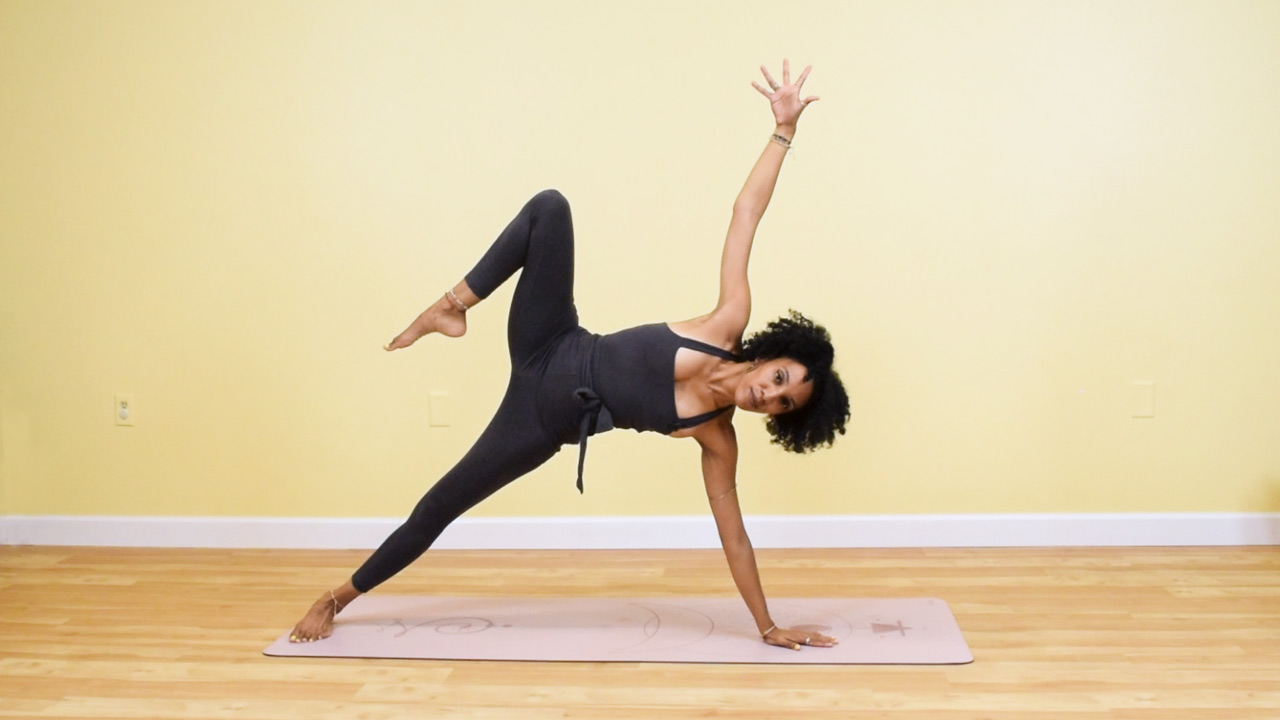When I teach yoga in studios, I enjoy hearing stories about how people came to find the practice. I love to know why people come back to the mat again and again, and the lessons they learn that help them to navigate their life
From a self-conscious, back-row student to an at-home practitioner and yoga teacher, I’ve realised that being part of a community is what’s helped me grow the most. In fact, for me, the ‘goal’ of yoga is to belong to or create a community. I’ve also learned that the journey starts with connecting with oneself.
My first yoga studio experiences
I first tried yoga just to see what it was about. And I didn’t, in fact, find a community of like-minded individuals who welcomed me and embraced me. For starters, I was in a homogenous space where no one looked like me.
I was a young, professional athlete and asana felt natural and accessible most of the time. The treatment was always cordial, the sequences were fun and interesting, and the teachers knowledgeable. I recall several wonderful classes, but I didn’t feel quite right. I seemed unable to adapt to the vibe. As I understood it, yoga was supposed to help me relax, yet during group yoga classes my anxiety would increase.
Energised and defeated
I would always arrive close to class time to keep the chit chat down to the strictly necessary. I’d find a spot on the back row, as close to the corner as possible. At times I’d get so close to the wall that my elbow would hit it if I opened out my arms. I would often choose to practice without my glasses to not concern myself with my neighbour’s “perfect” handstand. I followed the teacher’s instructions to the best of my ability because I didn’t want to be called out for doing the poses wrong.
At times I felt left out when the teacher would mention how good certain poses should feel for everyone. To me some poses felt like punishment. I’d be slightly distressed when presented with an “advanced students only” asana, since I wasn’t sure what that meant. I remember getting nervous when the teacher would call me out, even if it was to praise.
By the end of the session, everyone would say what an amazing workout they’d had, and I would quickly agree with whomever asked. But there was a dissonance: at the end of practice, I’d feel both energized and defeated.
How an online yoga practice transformed my experience
It was when I took a break from the studios and discovered online yoga that something changed. I began to experience the profound sense of connection that I realised I’d been searching for.
Because of my nomadic lifestyle (I was a professional figure skater at the time) online yoga seems like the obvious choice. I found EkhartYoga, the virtual streaming studio that I now call home. Practicing in my own space helped me find a sense of freedom that I could only compare to the sensation of being out on the ice alone, early in the morning with the fog swirling around me as I skated. In short, I found serenity.
Practicing in my own space helped me to find a sense of freedom that I could only compare to being out on the ice alone, early in the morning with the fog swirling around me as I skated.
I didn’t feel like I needed to perform for anyone. I didn’t need to look a certain way in Warrior II or try the most pretzel-like version of any given asana to impress myself or others. My focus wasn’t on the execution and the shapes anymore. What mattered was the breath and my ability to be present. I enjoyed my home practice and committed to it because it was manageable. Gone were the days of forcefully trying to fit in a 75-minute class to justify the investment of a studio membership.
I began to feel the benefits of a sustained, devoted yoga practice. As someone with a chronic illness, it was important to have freedom to practice and be, as I am.
With access to teachers from around the world, I experienced different voices, cultures, and styles of yoga, without the need to travel. I noticed how much more aware and focused I felt after practicing and to explore the connection of my body and mind. I realized that I had found what I was missing before: a connection with my own self. And this is the foundation of the practice.
Deepening my connection through training
I wanted to share the benefits of yoga with anyone who would listen. I wanted others to feel the same way I was feeling; more and more liberated every day. So, I decided to enroll in Teacher Training.
Again and again, I encountered asana-focused training programs. There was no acknowledgement of the roots of yoga or focus on equity and accessibility. When I took Claire Santos’ class, I discovered a different side of practicing with others in the same room. The training was small, comprising 6 or 7 humans that are now dear to my heart. The classes included poses, breathwork, and meditation. Sometimes we moved, other times we sat. Every class had dharma; knowledge and wisdom sprinkled through the poses with the kind, steady invitation to inquire.
I had finally found a space that felt good to practice in. I learned with a diverse and enthusiastic group. We connected and shared. We often invited one another to dive deeper into the practices of yoga and, when appropriate, face our demons. As I discovered my teaching voice, I understood my role as a student. And I learned to recognize what felt supportive in my practice and what didn’t.
Finding a new way in
I was able to overcome the discomfort that I had attached to studio yoga – not by shifting away from it forever, but by finding a new way in. I moved through unpleasant emotions at times, and realised that If I had felt this way, others did too. If I wanted to help others face their discomfort in a group setting, I could try to make my classes the place where they could.
I began a conscious quest to practice and teach at studios that felt like a warm hug, or a welcome home. I seek spaces (on- and offline) that present yoga as a holistic practice. Places where students are allowed to learn from their personal experience instead of simply following a ‘guru’.
Teachers and staff members belonging to a yoga studio ought to feel loved and valued; respect and decent wages are crucial. I seek spaces where any and all are met with consideration and kindness.
Community is key
You might have heard the quote that “Yoga is a work in, not a workout”. Whether you choose to practice at a studio or at home, and whether you enjoy Vinyasa flow or like to meditate and do breathwork, the practice of yoga is meant to connect us to ourselves, to each other, and to our purpose.
Delving into our own shadows can be uncomfortable and bring up difficult feelings. It is in community – whether in person or online – where we feel seen, heard, and included. Within a community we can begin to peel off the layers, release extra baggage, and find a deeper connection and understanding of who we truly are.
Love,
Laia x
Practice Laia’s most recent class on EkhartYoga
This ‘express’ class will hep you to release tension and reconnect to yourself so that you can get back to your day feeling more present, more aware, and less stressed out!
Main image courtesy of Clay Banks on Unsplash.


